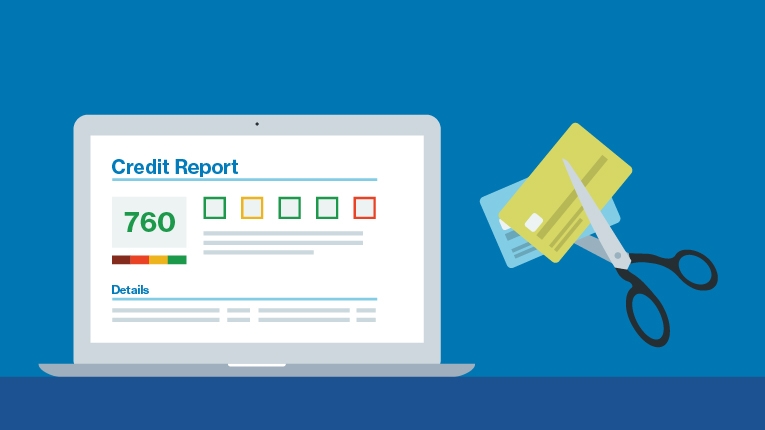Guide to choosing the best personal loans in 2024

With an uncertain future for interest rates and inflation nipping at your wallet, you might wonder if a personal loan makes sense in the year ahead. Here’s the good news: The best personal loans in 2024 still offer flexibility, fast funding, and an affordable way to achieve a number of financial goals.
To keep your personal loan affordable, you’ll need to understand how two main factors impact your monthly payment: your credit history and your choice of lender. Knowing how both impact your borrowing options, you can shop for the best personal loan for you in 2024 with confidence.
Best personal loans in 2024
Personal loan terms and interest rates depend largely on your credit history, income, and debts. The best personal loans available for people with fair credit may look different than the offers for those with good or excellent credit. To find the best deal possible for you, look for a lender offering the amount you need to borrow with lower interest rates, minimal fees, and repayment terms that work within your budget.
Loan amount | $1,000 - $100,000 |
APR range | 6.70% - 35.99% |
Average APR offered | 10.96% |
Terms | 3 to 5 years, typically |
*Bankrate.com, May 2023. |
How your credit score affects your personal loan options
Your credit score is a prediction of your credit behavior, such as how likely you are to repay a loan on time-based on information from your credit reports. Most popular types of credit scores (such as FICO®) range from 300-850. Generally, a higher credit score usually means it’s easier to qualify for a loan and may result in a better interest rate or loan terms. Scores are typically placed into one of the following categories:
Exceptional credit: >800
Very good to good credit: 670-799
Fair credit: 580-669
Poor credit: <580
If you have exceptional credit
FICO® Score: >800
Having exceptional credit and a spotless payment history makes lenders eager to offer you the best personal loans they have available. Not only will exceptional credit provide you with a wide array of lenders to choose from, but you’ll also enjoy some of the lowest interest rates around, which lowers your overall cost of borrowing over the life of the loan.
If you have good or very good credit
FICO® Score: 670 - 799
A credit score in the “good” to “very good” range puts you in contention for good personal loan interest rates and available terms. Lenders generally view you as a lower-risk borrower with a solid payment history who is probably unlikely to default on the loan. For your efforts, you’ll likely have an easier time getting approved for a personal loan than those with lower scores and be able to successfully rate shop between different lenders.
If you have fair credit
FICO® Score: 580 - 669
A credit score in the “fair” range means lenders may view you as a higher risk, which translates into higher interest rates and fewer potential lender options. To boost your chances for approval, consider applying for a lower loan amount, adding a cosigner or co-borrower, or securing your loan with collateral. However, if your score is on the higher end of this range, you could make moves to improve your score and reapply in a month or two when your score bumps up to the next higher range.
If you have poor credit
FICO® Score: <580
If your credit score falls within this range, it could be difficult to find a loan with a traditional lender. If you can secure a loan, the interest rate you’re offered could be unreasonably high—potentially higher than that of a credit card. As many lenders have a minimum credit score of 580 or higher, consider working on improving your credit score before applying for a personal loan. A few more months of on time payments could translate to a better rate, substantial savings, and lender options.
Where to find the best lender for personal loans
Another major factor that can impact personal loan costs is the lender you choose. Different lenders may specialize in different loan amounts and funding speeds or be better suited to those with different credit scores. If that sounds complicated, don’t worry—there are generally four types of personal loan lenders and it’s easy to get up to speed on each.
1. Online lenders
Online lenders operate much like traditional lenders. You’ll apply for a loan and, if approved, receive funding through the financial institution you’re working with. Online lenders may offer competitive rates and an easier application process that can be completed online, saving you time and money.
For borrowers looking for convenience, applying online or through a lender’s mobile app may be ideal. Using a lender without a physical location means you won’t be able to meet face-to-face, however be sure you’re able to easily talk to someone in customer support by chat, email, or phone.
Qualification and funding process: Online lenders offer flexibility and ease. You can compare rates and terms from multiple lenders and find the best deal specific to your credit score. Additionally, you can sometimes obtain instant approval, which can speed the funding process.
2. Online lending marketplaces
Online lending platforms are similar to online lenders but have different ways of connecting you with a lender and funding your loan. Rather than fund a loan directly, online lending marketplaces connect you with one or more lenders based on your credit history and type of loan you’re looking for, and may service your loan by collecting and forwarding your payments to loan issuer(s). Alternatively, some online lending platforms may fund your loan directly and then sell or transfer it to a lender at some point in the future.
Qualification and funding process: Your borrowing experience and funding speed can vary depending on the platform you choose. Be sure to read the FAQs and online reviews for each platform to get a better idea of customer service and credit requirements.
3. Credit unions
Credit unions are not-for-profit financial institutions that offer personal loans, often with lower interest rates for their members. Some credit unions limit membership to those who work or live in certain areas. Others are open to almost anyone who opens an account or makes a small donation to a partner charity. Before you’re eligible to take out a personal loan with a credit union you’ll first need to qualify as a member.
When considering a personal loan from a credit union, you’ll need to look beyond rates and terms. Many credit unions keep costs low by offering fewer products and services than traditional banks, and you might need to visit a branch to complete a loan application in person with a loan officer instead of submitting one online.
Qualification and funding process: Credit unions are often more forgiving of members if you don’t yet have a credit history or have a spotty credit history. Once approved, funds can be deposited directly into your account.
4. Banks
For a traditional lending experience, most brick-and-mortar banks also offer personal loans in addition to many other financial products and service offerings. Generally, you’ll be able to complete your loan application and make payments online or you can also visit a branch if you prefer a more personal approach.
If you’re already a bank customer, you may receive extra advantages when taking out a personal loan. For example, many banks offer interest rate discounts if you set up automatic payment withdrawals from your checking or savings account. You may also enjoy faster funding since the bank can deposit your loan directly into your account.
Qualification and funding process: Banks tend to have the strictest qualification process for loans. You can expect rigid qualification guidelines but may be able to score an interest rate discount if you sign up for automatic payments from your checking account.
9 factors worth considering before applying for a personal loan
To ensure you get the best personal loan for you, it helps to know how to compare your loan options before you begin your search. Here are nine factors to consider before you apply.
1. Secured vs. unsecured
Many personal loans are unsecured loans, meaning you don’t need to put up collateral to get the loan. However, some lenders offer secured personal loans—often by keeping the collateral for the loan in a savings account until you pay off the debt.
Secured loans can be easier to qualify for and may offer lower interest rates. However, if you don’t have the collateral or don’t want to lock up your savings, an unsecured loan may be a better option.
2. Interest rate and APR
Personal loans usually have fixed interest rates, and your loan’s rate impacts your total borrowing cost. A loan’s annual percentage rate (APR) tells you the annual cost of borrowing the money, inclusive of certain fees—like origination fees. All else being equal, loans with the lowest APRs will often be the best personal loans for you to consider and apply for.
3. Fees
Lenders may charge a variety of fees, including upfront and ongoing fees, which can vary significantly between lenders. That’s why it’s important to compare fees as you look for the best loan.
The most common fees to look for are origination fees, administration fees, or processing fees. These fees are often based on a percentage of your loan amount, but some lenders charge a flat fee instead of a percentage. Either way, the lender will account for these fees by reducing your loan proceeds or by adding to the total amount borrowed.
You may also see activity-based fees, such as late fees. Some lenders may offer a grace period for late fees, which can help keep your borrowing costs in check.
Finally, prepayment penalties aren’t common with personal loans, however they can appear under certain circumstances. For example, if you’re using a personal loan as a debt consolidation loan, check to see if the debts you’re consolidating have prepayment fees or other penalties.
4. Repayment terms
Personal loans are installment loans you repay over a predetermined period. Having several term options to choose from can be important because your loan’s term length can influence your interest rate and your monthly payment. For example, longer repayment terms often have lower payments but higher interest rates—meaning the loan could cost you more over its life. Shorter repayment terms can lead to paying less interest, but you’ll most likely have a higher monthly loan payment.
Also consider how frequently your lender requires payments on your loan. Monthly payments are common, but some lenders may require weekly or biweekly payments.
5. Maximum loan amount
Lenders often have minimum and maximum loan amounts. As you consider different lenders for your personal loan, look for lenders with upper limits that meet your needs. For example, you don’t want an inquiry on your credit for a loan that won’t cover your desired debt consolidation or major purchase.
However, keep in mind that your approved loan amount may differ from the lender’s maximum limit. Factors like credit, income, and other debt obligations can have an impact. You want to be able to borrow as much money as you think you may need (but not much more than that).
6. Loan eligibility
Your eligibility for a loan depends on a lender’s requirements and preferences. For example, a lender may require you live in a state where the lender operates.
Eligibility can also depend on your credit score, debt-to-income (DTI) ratio, and history with the lender. Specific requirements aren’t always shared with applicants, and they may be interrelated. For example, if you have excellent credit, you may not need as low a DTI ratio as the lender may require of someone with a lower credit score.
One of the best ways to check your eligibility for a personal loan is to see if the lender offers pre-qualification with a soft inquiry, which won’t impact your credit score.
7. Joint applications
Some lenders require you to take out a loan on your own, and others allow you to apply with a cosigner or co-borrower. Adding someone who has a good credit history and a high income to your loan can be helpful if you’re having trouble qualifying on your own or if you want to get a loan with more favorable terms.
However, carefully consider who you ask to cosign on a loan with you. As a joint applicant, they will be legally responsible for repaying the loan if you don’t, which could impact their credit.
8. Loan funding speed
Before applying for a personal loan, check how long it takes the lender to approve your loan application, and how quickly they distribute the money after approval. While a few lenders offer next-day funding, others may take up to a few days or more. Generally, most lenders deposit loan proceeds quickly once approval is final.
To speed up the processing of your application (which influences how quickly you receive funding) it helps to organize everything you need before applying. Whether it’s connecting a bank account, providing proof of income, or verifying your identity, lenders are generally quite clear about what documentation they need to process your application. Watching for these notifications during the application process and responding to them as quickly as possible will impact how fast funding occurs.
9. Customer service
From the moment you apply all the way through to submitting your final online payment, the best personal loan lenders will offer excellent customer service every step of the way.
When evaluating lenders, look at how easy they make it to speak with a live member support representative, including by online chat, email, social media direct message, and phone. Be sure to read lender reviews on third-party review sites to get the inside scoop from current and former customers.
4 steps to finding the best personal loan for your needs
With all the information you need on board to find the best personal loan for you, a simple plan for researching and comparing lenders can help make it easier, and potentially connect you with your ideal lender in less time.
1. Know your needs and limits.
Before taking out a loan, it helps to nail down your loan purpose, how much you want to borrow, and your ideal monthly payment based on your budget.
For example, if you’re refinancing credit card debt, add up all your current balances to get an idea of how much you would ideally like to borrow. Keep in mind you may need to borrow slightly more if you choose a lender that will subtract an origination fee from your loan proceeds.
Knowing how much you can afford each month can also be important. While a loan with a longer repayment term might not offer the best rate, it could still be the best loan for you if the payment works for your budget.
2. Research potential lenders.
Review each lender’s basic eligibility requirements and loan amounts to verify the lender meets your needs. As you research lenders, remember that lenders will often advertise a teaser APR range on their websites. Since personal loan interest rates depend on a variety of factors, don’t assume the lender advertising the lowest APR is the one that will offer you the lowest rate.
3. Get quotes from multiple lenders.
To find the best loans with low interest rates, it’s important you compare APRs and terms across multiple lenders. Ideally, you’ll be able to pre-qualify through a soft credit inquiry—meaning the lender will review your credit report, but the credit check won’t impact your credit score. Lenders will then use the soft inquiry to give you an estimate of how much you could be eligible to borrow, including an estimate of available rates and terms.
When you complete your application and accept the loan terms offered on a specific loan, it triggers a hard credit inquiry which may shave a few points off your credit score. If you're doing a lot of rate-shopping with multiple lenders, FICO® ignores inquiries made in the 30 days prior to scoring. So, if you find a loan within 30 days, the inquiries won't affect your score if you’re rate shopping.
4. Compare APRs, fees, and discounts.
A low interest rate might be enticing, but comparing the APRs (and loan options) being offered is the smarter move. Unlike the interest rate, the APR will tell you the annual cost of the loan, inclusive of any fees.
You may also want to take a closer look at the fees. For example, if you think you may repay the loan early, it might make more sense to opt for a loan with no prepayment penalty— even if it has an origination fee and doesn’t have the lowest APR.
Some lenders may also discount your interest rate if you sign up for automatic payment withdrawals from your bank account. The discount may be included in the quoted interest rate and APR, so make sure you factor this in when comparing offers.
The bottom line
No matter your financial goals, an unsecured personal loan can offer competitive rates and fast funding—and often, at lower rates than a credit card. By knowing how credit scores and lender types can impact your borrowing options, you’ll be better equipped to evaluate different loan options and choose the best personal loan that satisfies both your goals and your budget.




